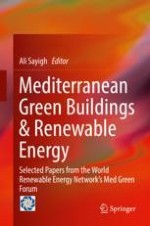2017 | OriginalPaper | Buchkapitel
22. Geo-Climatic Applicability of Direct Evaporative Cooling in Italy
verfasst von : Giacomo Chiesa, Fabio Acquiletti, Mario Grosso
Erschienen in: Mediterranean Green Buildings & Renewable Energy
Aktivieren Sie unsere intelligente Suche, um passende Fachinhalte oder Patente zu finden.
Wählen Sie Textabschnitte aus um mit Künstlicher Intelligenz passenden Patente zu finden. powered by
Markieren Sie Textabschnitte, um KI-gestützt weitere passende Inhalte zu finden. powered by
